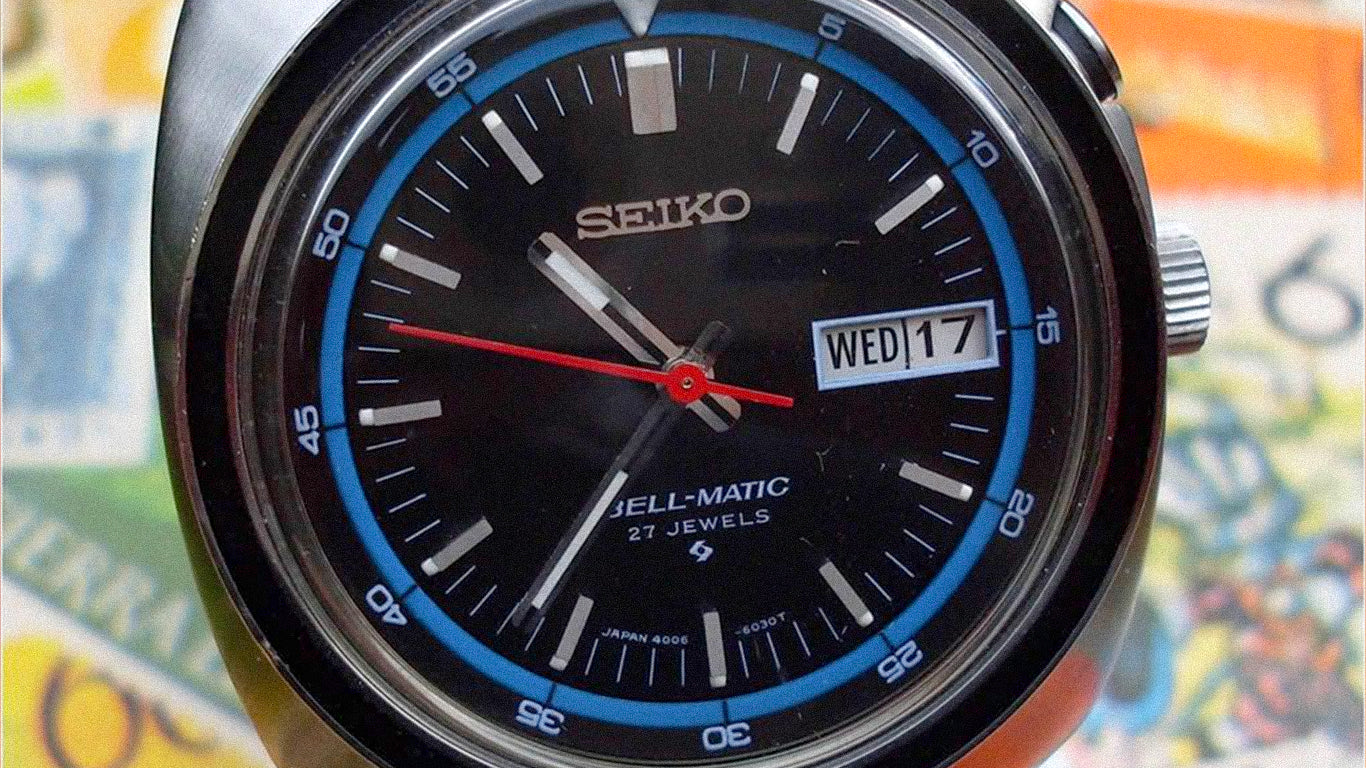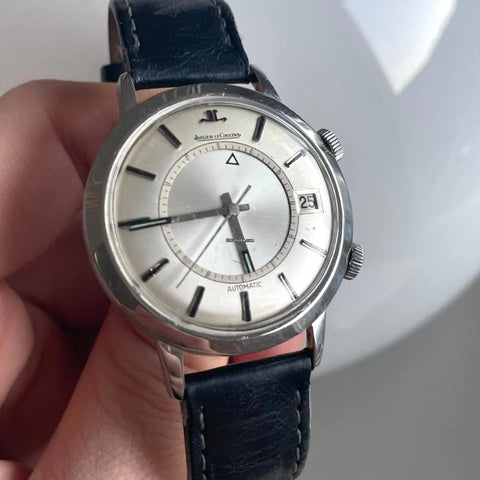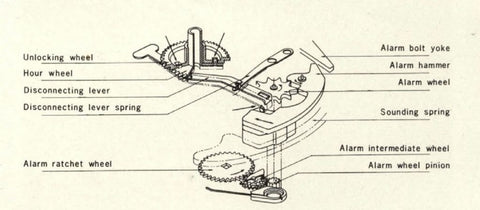Seiko Bell-Matic - The World's First Completely Automated Alarm Watch

Vulcain had been working since the early 1940s to perfect a movement that could chime an alarm loud enough to be heard, but not so violently that it interfered with the delicate business of accurate timekeeping. After several years of development, the Swiss company released the world’s first mechanical alarm watch in 1947: the ‘Cricket’, named after its characteristic chirping alarm.
The Cricket watch would go on to become famous for being gifted to almost all US presidents since Harry Truman. Apparently, Lyndon Johnson used it frequently to interrupt tedious meetings whenever he needed an excuse to leave early.
In North America, Hamilton licensed the Vulcain Cricket to offer their own alarm watch. Vulcain ceased production of the Cricket during the 1970s Quartz Crisis but started production again with the resurgence in Swiss luxury watchmaking in the early 2000s Jaeger-LeCoultre introduced their famous Memovox in 1949, two years after the Vulcain, and it remains in production to this day.
The first version used a manually-wound Caliber 489 but in 1956, with the addition of a bumper mechanism, the Memovox became the first automatic alarm watch. However, a fully automatic alarm watch with a bi-directional 360-degree winding rotor would not be available until the launch of the Seiko Bell-Matic a decade after the bumper Memovox. (Tudor also developed an alarm watch in 1959 with its manually-wound Adviser. The Adviser remained in production until 1977 but, like the Vulcain, has also been recently reissued).

In 1966, Seiko developed its own alarm watch, the BellMatic, containing either the 4005 or 4006 movements. The 4005 movement is significantly rarer than the 4006 since it was only used in 1968 and 1969. As is normal with Seiko movement numbers, a caliber with a number ending in 5 is the date only variety, while a caliber number ending in 6 is the day/date variety.
Other than this difference, the movements are the same and we generally refer to the Bell-Matic movement as 400x when discussing both. The Bell-Matic vintage market is a veritable minefield of Franken watches built from parts with mismatched dials, cases, indicator rings and hands. This is because the 400x movement specifically, and the Bell-Matic range in general, stands alone in the Seiko catalogue. These watches are not as common as other vintage models and they do not share many parts with other models.

New parts are generally not available so when a replacement is required, parts tend to be plundered from any old 400x and not necessarily from the correct model. The alarm indicator ring for example is a unique design with only fits the 400x movement but that also means all 400x rings work with all Bell-Matic models, leading to the potential of mismatched parts over the last 50 years.

The Seiko Bell-Matic models came in a large number of designs and model numbers. At first glance, this variety can seem arbitrary and confusing but if we arrange the model numbers in order then a consistent pattern of development is revealed, from the 60s designs influenced by the “Grammar of Design” conventions, through far more extravagant designs in the early 70s influenced by the sports diver range, back to more conservative dressy designs at the end of the decade that signal the prosaic watches of the 80s.
Viewed in its entirety, I would argue that the Bell-Matic range presents a microcosm of Seiko's design progression for almost 15 years.
Our particular example which is in cushion shape is quite rare. Brown/chocolate dial with matching brown “inlays” on the bezel. Its production dates back to September 1971.




